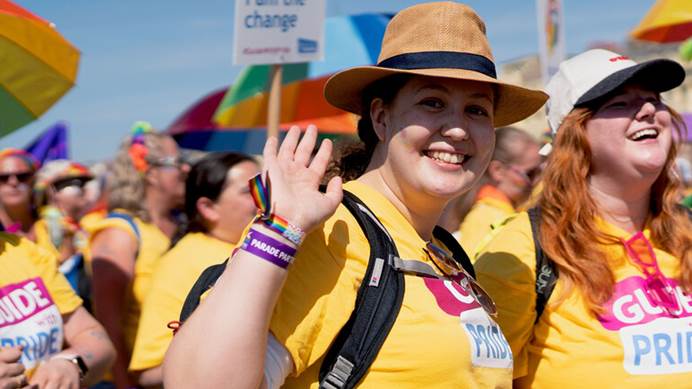How to communicate well with D/deaf people
Use this advice to make sure that everyone feels included in what you’re doing
The inclusion team at Girlguiding Greater London Kent got in touch with us to share some brilliant advice on how you can include D/deaf people in Girlguiding, and other areas of your life too!
Whether you’re a volunteer, a young member or a parent, use this advice to make sure that everyone feels included in our community.
What do we mean by D/deaf?
People experience deafness or hearing loss in different ways.
The word ‘deaf’ describes anyone who experiences deafness or severe hearing loss. A lower case ‘d’ refers to people who identify with the medical condition of being deaf. They might prefer to communicate in spoken languages rather than sign language. They might also lipread or use hearing aids.
However, ‘Deaf’ with a capital ‘D’ is used to describe people who have a stronger connection with Deaf culture, and the Deaf community. Deaf people will often prefer to use sign language, and it may be their first language. Sharing a language and a community is much more important and relevant to Deaf people than the medical definition of deafness.
Not every deaf person will feel a connection to the Deaf community, but it’s important to also recognise Deaf people as the unique and vibrant community they are!
So, how do we include these different viewpoints? D/deaf is used as an inclusive way to describe people who have a similar health condition, but approach communication and identity very differently. By using inclusive language, we can make adjustments to help everyone who experiences deafness, no matter how they identify.
How you can communicate better with D/deaf people
A D/deaf young leader reached out to us, and said that the following tips would be extremely helpful, both online and in person. These are great rules to follow in a unit meeting, or in any kind of group setting:
- Make sure you are in view and don’t turn your head away so that we can lip read.
- Don't cover your mouth when talking or wear distracting earrings.
- Let us sit close to you so that our view is not blocked and we can see you clearly.
- If you can, make sure your face is well lit, not in shadow and without a strong light behind you. And let us choose where to sit so we can find the position that helps us understand you best. This might be to one side, or directly facing you.
- Remember that we cannot take notes whilst lip reading, so a handout or other notes are very helpful.
- On Zoom, remember to use the subtitles. Those that do not need them can easily turn them off. The speaker is too small on screen to lip read!
- Also remember to put everyone on mute and only allow one person at a time to talk.
Signing the Promise
Girls and volunteers can learn to sign the Girlguiding Promise in Makaton!



